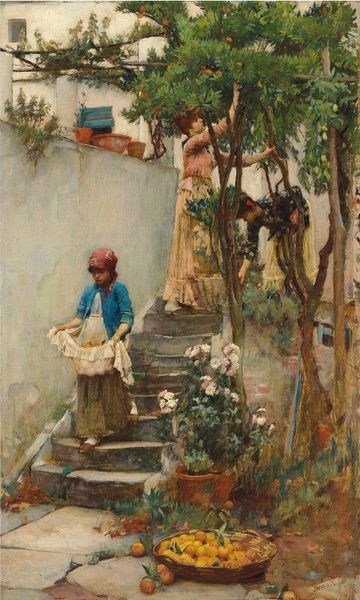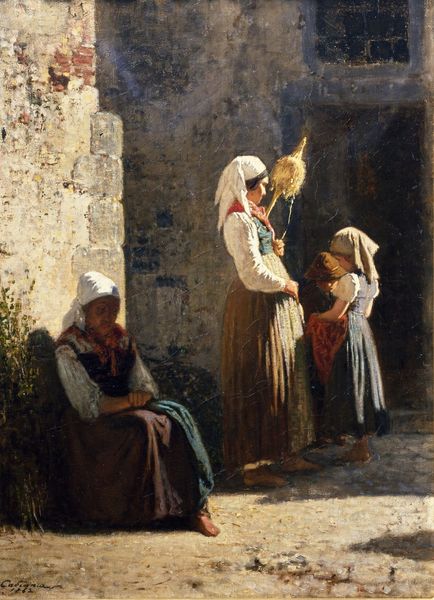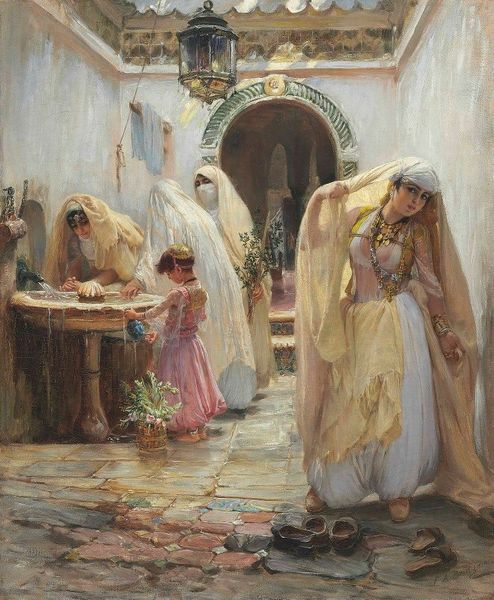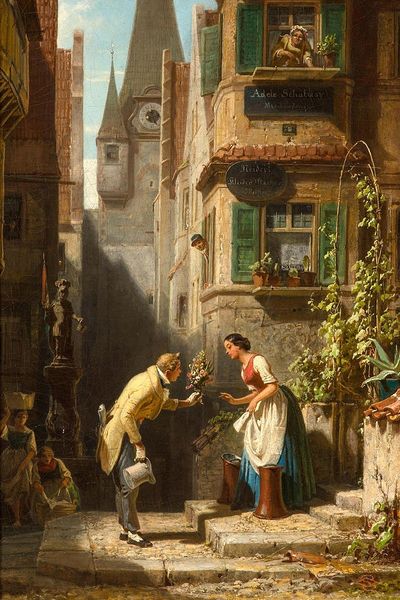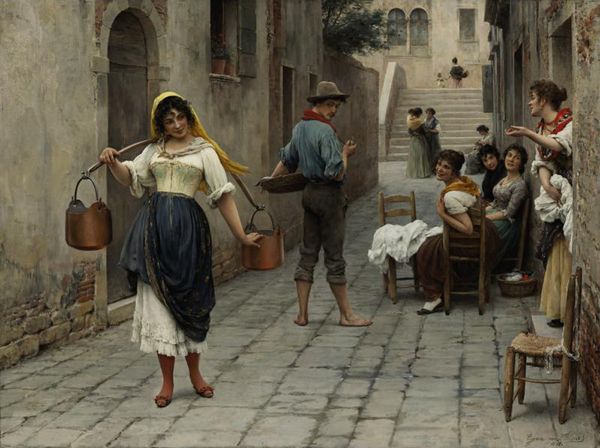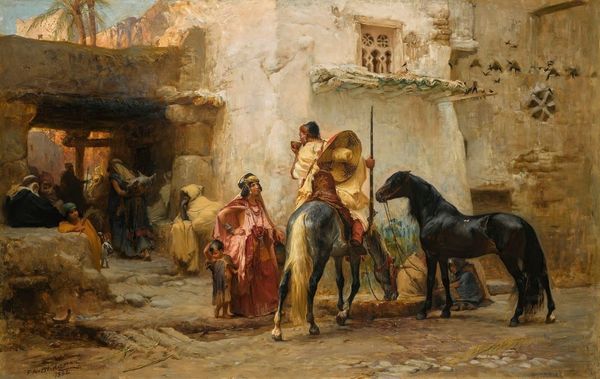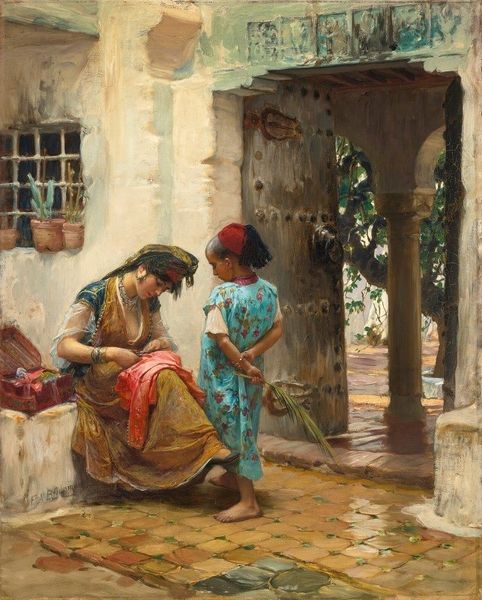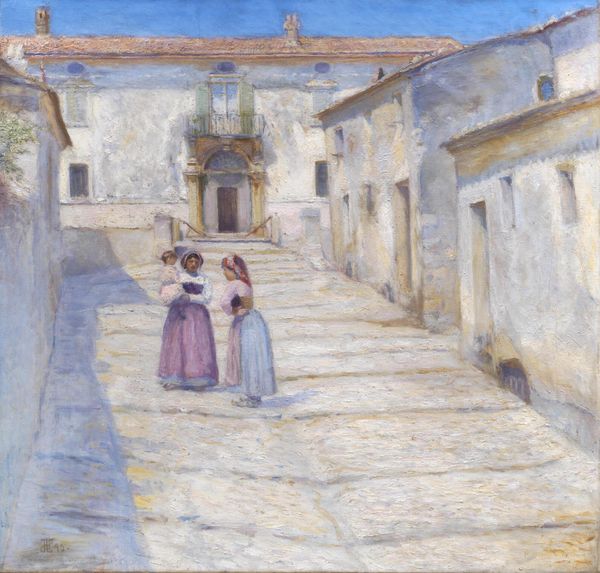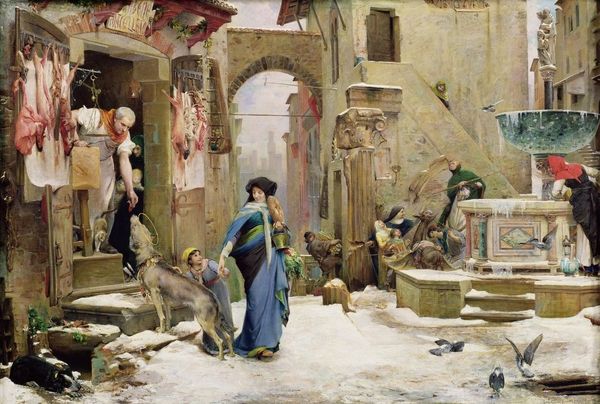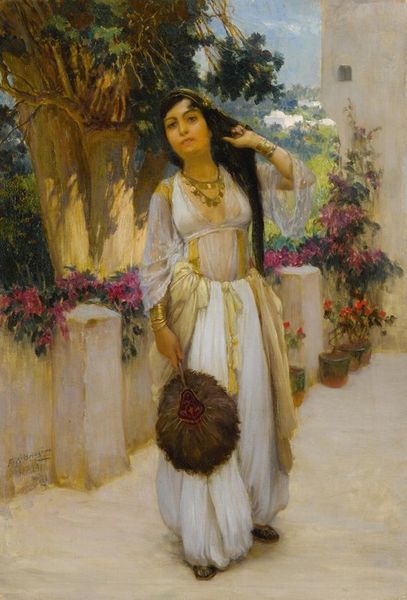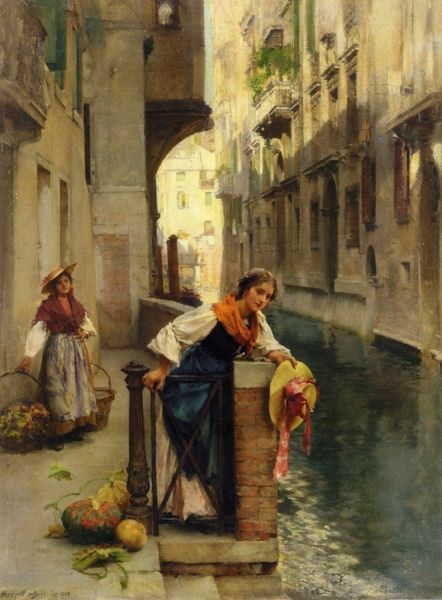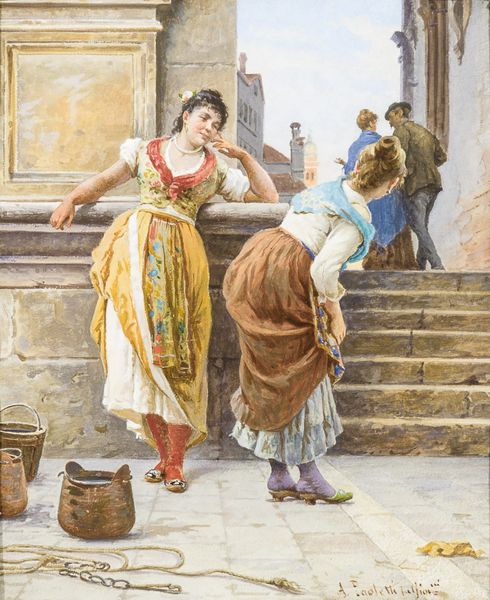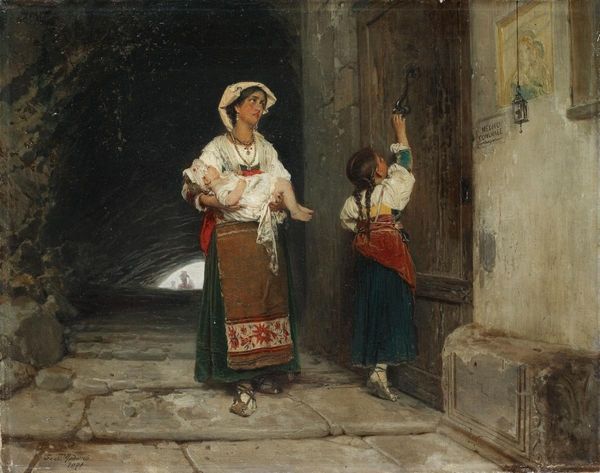
plein-air, oil-paint
#
gouache
#
figurative
#
impressionism
#
plein-air
#
oil-paint
#
landscape
#
figuration
#
oil painting
#
cityscape
#
watercolour illustration
#
genre-painting
#
watercolor
Copyright: Public Domain: Artvee
Curator: This is Peder Severin Krøyer's "A Street in Torello, Italy", painted in 1890. What are your initial thoughts? Editor: It has a lovely, sun-drenched quality, like a snapshot of everyday life. All these people milling about on this narrow street. But what really jumps out at me is the palpable sense of texture – the rough stonework, the woven fabrics of their clothes, all captured with these visible brushstrokes. How do you approach a piece like this? Curator: I think it is critical to look closely at Krøyer's engagement with materiality and production here. Note the tangible reality he constructs through the paint itself: consider the physical act of layering oil paint to depict those sun-baked walls. This wasn't about high art; he was capturing a place. Editor: Right. The labour involved is almost foregrounded. But how does this relate to, say, a social reading of the painting? Curator: Consider how Krøyer, a Danish artist, engages with this specific Italian setting. It begs questions: who are these women working? Are they making lace, perhaps? The clothing materials become a signifier of class, region, profession. Also think of him as an outsider. To what degree does that inform his artistic representation of this street? Editor: So, you're saying the value of this piece lies, in part, in understanding the material conditions it depicts and the process that birthed it? It wasn't just "art for art's sake." Curator: Precisely. This wasn't just about the visual, it’s a trace of the world. The physical matter of the world represented here. This prompts us to look at the labor of image-making, and of life. Editor: Fascinating. I’ll certainly look at paintings with a different lens now. It's about the raw material and production processes and less about some intrinsic ethereal value of art. Curator: Exactly. It encourages you to interrogate who benefits, whose stories get told, and the socioeconomic realities interwoven into artistic practice.
Comments
No comments
Be the first to comment and join the conversation on the ultimate creative platform.
